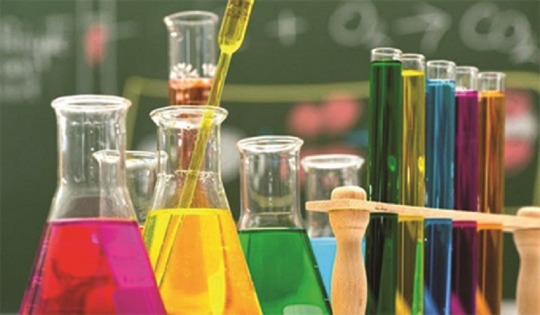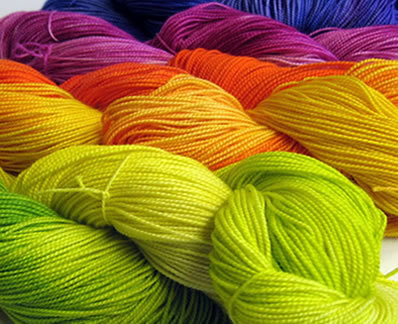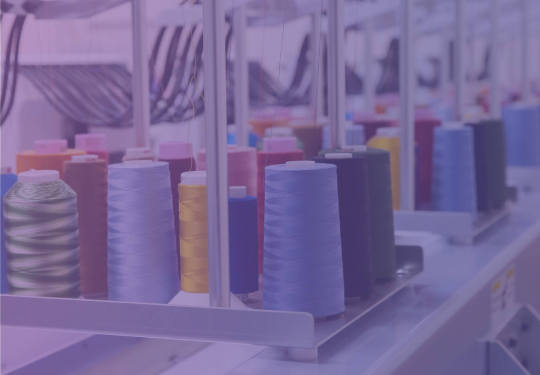Text
How Textile Chemical Dyes Impact the Environment?
In the vibrant world of fashion and textiles, colors play a pivotal role in capturing our imagination and defining our sense of style. The captivating hues of our garments owe their brilliance to a significant yet often overlooked aspect of the industry: chemical dyes.
These dyes have revolutionized the textile sector, making it possible to produce a wide array of colors and patterns that appeal to consumers' ever-changing tastes. However, amidst this rainbow of possibilities lies a dark truth - the environmental impact of textile chemical dyes.
In this blog, we delve into the consequences of using chemical dyes in textile production and explore sustainable alternatives that can help mitigate the ecological footprint of the fashion industry.

Water Pollution
One of the most significant environmental concerns associated with chemical reactive dyes in textiles is water pollution. Conventional dyeing processes often involve large amounts of water, which is used to rinse and treat fabrics. As a result, vast quantities of chemically-laden wastewater are discharged into rivers and water bodies, contaminating aquatic ecosystems. Many of these dyes are non-biodegradable and can persist in the environment for decades, disrupting the natural balance and threatening the health of aquatic organisms.
Energy Consumption
The process of digital textile sublimation inks requires substantial energy inputs, primarily during the dye application and fixation stages. Traditional dyeing methods may involve high-temperature dye baths and extended processing times, adding to the industry's carbon footprint. The energy-intensive nature of these processes contributes to greenhouse gas emissions, accelerating climate change and its devastating consequences.
Toxic Chemical Exposure
Chemical dyes used in textile auxiliaries manufacturers often contain hazardous substances such as heavy metals, formaldehyde, and volatile organic compounds (VOCs). Not only are these substances harmful to the environment, but they also pose significant health risks to the workers in the textile industry who are exposed to them daily. Moreover, consumers may experience allergic reactions and skin irritations when in contact with garments containing residual dye chemicals.
Biodiversity and Land Contamination
When dye wastewater finds its way into the soil, it can have severe consequences for terrestrial ecosystems. The toxic substances from the dyes can leach into the soil, affecting soil quality and disrupting the delicate balance of local flora and fauna. Moreover, the disposal of waste from dyeing processes can lead to the accumulation of harmful chemicals in landfills, further exacerbating the environmental impact.
Scarce Resource Consumption
Many chemical dyes rely on non-renewable resources for their production. For instance, some synthetic dyes use petroleum-based derivatives, placing additional strain on dwindling fossil fuel reserves. As these resources become scarcer, the textile industry must find more sustainable alternatives to safeguard the planet's future.
Embracing Sustainable Solutions
As we confront the ecological consequences of chemical dyes, the textile industry is gradually recognizing the urgent need for change. Embracing sustainable solutions can help mitigate the impact of dyes on the environment:
Natural Dyes: Traditional plant-based dyes, such as indigo, turmeric, and madder, offer a biodegradable and eco-friendly alternative. They can be sourced sustainably, reducing the strain on the environment.
Waterless Dyeing Technologies: Innovative technologies, like air dyeing and digital printing, minimize water usage and eliminate the discharge of wastewater, significantly reducing water pollution.
Biodegradable Dyes: Researchers are developing biodegradable dyes that break down naturally over time, circumventing the issue of persistent chemicals in the environment.
Eco-Friendly Dyeing Processes: Manufacturers can adopt low-impact dyeing techniques that consume less energy and minimize toxic chemical usage, ensuring a cleaner and safer environment for all.
The use of chemical dyes offers by textile printing ink exporter in the textile industry has undoubtedly made fashion more colourful and accessible. However, this innovation comes at a high cost to our environment. From water pollution to biodiversity loss, the impact of chemical dyes on the planet is far-reaching.
To ensure a sustainable future, it is imperative for the industry to embrace eco-friendly alternatives and implement responsible dyeing practices. By taking steps towards a more environmentally conscious approach, we can paint a brighter, greener canvas for the fashion world, where creativity and conscience coexist harmoniously.
#Textile Dyes Exporter#Textile Dyes Manufacturers#Textile Dyes Manufacturers in India#Digital Textile Reactive Inks#Digital Textile Printing Ink Manufacturer#Digital Textile Printing Ink Exporters#Textile Printing Ink Exporter#Digital Textile Sublimation Inks#Textile Auxiliaries Manufacturers#Textile Auxiliaries Exporter#Reactive Dyes Manufacturer#Reactive Dyes Exporter#Reactive Dyes Manufacturer in India#Textile Chemical Dyes
0 notes
Text
Best Quality Textile Printing Ink Exporter in India
Since being established in 1995, Sudeep Industries has been successfully supplying top-quality digital textile printing ink exporters to various customers everywhere in the world with a corporate lifestyle based on putting customers first and a strong focus on new technologies.
Our company is committed to bringing about its vision of becoming an even additional integral part of its supplier’s business portfolio by providing them with ultra-modern products that increase efficiencies as well as streamline processes while keeping down costs.
Recently, pigment ink's popularity is rising due to its vibrant pigmentation and long-established formula. Pigments are acting as a viable alternative to dyes in textile inkjet printing for the reason that they are long-lasting and create more extraordinary colors.

We offer reactive inks in different color ranges, as well as Black, Cyan, Magenta, Yellow, Red, Orange, Blue, and Light Black. Our team employs quality control throughout to make sure that each and every batch of ink is made with the consistency of color shade and strength. The inks are well shielded to make them print head-friendly.
The modification of technology has made custom apparel for particular, teams and fans within the world of sports a necessity to maintain competitiveness. Brands must stay on the cutting edge of the industry to create unique identification around their products and services.
Reactive dye inks are admired in fashion applications. The dye fragment has "reactive" sites that are physically assured with natural substrates like cotton. Actually, the dye is incorporated into the fiber. As an outcome, it yields high rub-fastness.
Utilization of reactive dye inks is a discreditable wasteful process due to the large post-processing required. However, they produce important visually appealing products.
To what extent digital textile printing inks are safe likewise aka skin level depends on their exact chemistry. Globally, it is normally considered that common products are safe.
0 notes
Text
Best Quality Textile Chemical Dyes In India
Since 1995, Sudeep Industries has grown up steadily and today it is one of the leading companies manufacturing and exporting the best standard textile chemical dyes.
Dry dyeing is a technique that can significantly decrease water utilization by making use of a supercritical liquid form of carbon dioxide. This can help in the process of dyeing textiles, paper, and other materials using disparate colors and properties.
Dyes used for textile production consume large amounts of water, whether natural or chemical-based dyes. Textile products that are dyed absorb about 100-150 liters of water per kilogram of textiles produced, which means a significant economic and environmental impact is caused.

Yarn dyeing is a type of fabric dyeing method in which the yarns are dyed instead of the fabric. We are an ISO-certified company that has been honing a reputation for manufacturing and exporting only the best reactive dyes. We have Manufacturers are searching for more cost-effective ways to produce dye. Some companies have taken the thoroughgoing idea of nanotechnology and requested it for the production of dyes. This impacts both natural and artificial dyes, but with a new influx of man-made technology, there are traits corresponding to these products that can lead to more sustainable solutions.
It’s time we stepped up and recognized that taking working on sustainability is no longer a luxury, it’s a necessity. All over the world governments and industries have found common ground with each other to lead the charge together in developing new solutions that execute not harm the environment.
Digital Printing outcome (Pre-padding compound), Decorative preprint (Foil, Zari, Gold, and Glitter Binders) & White ink/khadi preprint. Along with this, we also specialize in high-production pigment dispersion for Dope Dyeing application on Viscose Rayon fiber coloration.
Most textile processing involves a variety of chemical processes, such as scouring and bleaching. However, dyeing is a much more varied process that uses acid, alkaline, reducing agents, dyestuffs, etc.
0 notes
Link
Sudeep Industries - Textile chemical dyes holds expertise in fusing theknowledge of chemistry and chemical processing technology in order to formulatefine-quality of Chemical Dyes which assure of even colouring with the properties of resistivity to light, moisture and heat, in addition to the guarantee of color fastness, permanency and better solubility.
0 notes
Link
Textile chemical dyes are known to have superior fastness properties due to the molecular bonding that occurs during the dyeing process. Textile chemical dyes are commonly used in dyeing of cellulose like cotton, wool and nylon. Textile dyeing is a well-accepted method for the coloration of cellulose fibre as it attaches itself to their substrates by a chemical reaction to form a covalent bond between the molecules of the dye and the fibre.
0 notes
Link
Take a look at some of the characteristics of Sudeep’s textile chemical dyes manufacturer in India. The basic character of a textile chemical dye is that it is anionic, which makes it suitable for use on polyamide, cellulose, and protein fibers.
0 notes
Photo

Best Textile Chemical Dyes Manufacturers in India
Sudeep Industries was established in 1995 as textile chemical dyes manufacturing company in India. We have marked our presence in the market as one of the most outstanding textile chemical dyes manufacturers and textile chemical exporters from India. Most of the operations in the textile processing such as bleaching, scouring, dyeing and printing are carried out by use of basic chemicals like acid, alkalise oxidising, reducing agents dyestuffs etc. The specification of all our products have made us a pioneer name across the globe, as well as the international markets of Brazil, Bangladesh, Pakistan, Indonesia, Turkey, Bangladesh, Mexico, Iran, China, Vietnam, South Africa and many other countries.
0 notes
Photo

Best Textile Auxiliaries for Sale in India - Sudeep Industries
Sudeep Industries was established in 1995 as manufacturing company for textile auxiliaries and chemicals. We have marked our presence in the market as one of the most outstanding textile auxiliaries manufacturers and textile auxiliaries exporters from India. Most of the operations in the textile processing such as scouring, bleaching, dyeing and printing are carried out by use of basic chemicals like acid, alkalies oxidising, reducing agents dyestuffs etc. The specification of all our products have made us a pioneer name across the globe, as well as the international markets of Pakistan, Indonesia, Turkey, Brazil and many other countries.
0 notes
Text
Virtues and Shortcomings of Reactive Dyes in Textile Industries
Dyeing is a process of transforming a simple looking substrate into a luxurious one. Most brands have used and are using reactive dyes for pushing their brand name further. Dyeing is not just a colouring process instead they add value to the product. […]

The post Virtues and Shortcomings of Reactive Dyes in Textile Industries appeared first on Uberant.
0 notes
Text
What makes Reactive dyes pioneer of other Dyes
Dyeing is a process of injecting fresh and live colours to the fibre substrate. Fibre reactive dyes are permanent and affordable colorants that drastically improve quality and texture of fibre. […]

The post What makes Reactive dyes pioneer of other Dyes appeared first on Wordpress.
0 notes
Text
A Quick Guide About Handling Reactive Dyes
Colorants that define future lifestyles are none other than reactive dyes. Although there are many other dyes like disperse dyes which have gained similar fame ground yet reactive dyes have bagged the priority. […]

The post A Quick Guide About Handling Reactive Dyes appeared first on Wixsite.
0 notes
Text
Some Important Dye Chemicals That Partner Reactive Dyes
Reactive dyes help transforming a simple looking substrate into a fresh and charming one. But do they do it alone? Although reactive dyes have strong grounds in textile industries but these grounds too need support […]

The post Some Important Dye Chemicals That Partner Reactive Dyes appeared first on Sites Google.
0 notes
Text
World Class Reactive Dyes Manufacturer and Exporter

Sudeep Industries is one of the renowned Reactive Dyes Manufacturers and Exporters in India. Our textile Reactive Dyes and bifunctional dyes are very popular for various fabric coloration purposes. The Reactive Dyes can be applied simply on wool, nylon etc. The effectiveness of these moderately priced Reactive Dyes has been cherished all around. This variety of Reactive Dyes is highly tested for quality control by our team of quality controllers to make them free from all drawbacks. Visit : www.sudeepind.com
0 notes